Small molecule BKM1972 inhibits human prostate cancer growth and overcomes docetaxel resistance in intraosseous models
- PMID: 30660650
- PMCID: PMC6361683
- DOI: 10.1016/j.canlet.2019.01.010
Small molecule BKM1972 inhibits human prostate cancer growth and overcomes docetaxel resistance in intraosseous models
Abstract
Bone metastasis is a major cause of prostate cancer (PCa) mortality. Although docetaxel chemotherapy initially extends patients' survival, in most cases PCa becomes chemoresistant and eventually progresses without a cure. In this study, we developed a novel small-molecule compound BKM1972, which exhibited potent in vitro cytotoxicity in PCa and other cancer cells regardless of their differences in chemo-responsiveness. Mechanistic studies demonstrated that BKM1972 effectively inhibited the expression of anti-apoptotic protein survivin and membrane-bound efflux pump ATP binding cassette B 1 (ABCB1, p-glycoprotein), presumably via signal transducer and activator of transcription 3 (Stat3). BKM1972 was well tolerated in mice and as a monotherapy, significantly inhibited the intraosseous growth of chemosensitive and chemoresistant PCa cells. These results indicate that BKM1972 is a promising small-molecule lead to treat PCa bone metastasis and overcome docetaxel resistance.
Keywords: Bone metastasis; Chemoresistance; Preclinical model; Prostate cancer; Small-molecule therapy.
Copyright © 2019 Elsevier B.V. All rights reserved.
Conflict of interest statement
Conflicts of Interest
The authors declare no conflicts of interest
Figures
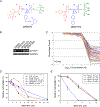
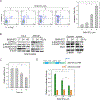
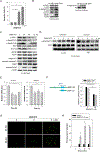

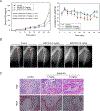
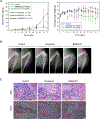
Similar articles
-
Pharmacological inhibition of noncanonical EED-EZH2 signaling overcomes chemoresistance in prostate cancer.Theranostics. 2021 May 8;11(14):6873-6890. doi: 10.7150/thno.49235. eCollection 2021. Theranostics. 2021. PMID: 34093859 Free PMC article.
-
Inhibition of skeletal growth of human prostate cancer by the combination of docetaxel and BKM1644: an aminobisphosphonate derivative.Oncotarget. 2016 May 10;7(19):27489-98. doi: 10.18632/oncotarget.8481. Oncotarget. 2016. PMID: 27050371 Free PMC article.
-
ABCB1-mediated docetaxel resistance reversed by erastin in prostate cancer.FEBS J. 2024 Jul;291(14):3249-3266. doi: 10.1111/febs.17135. Epub 2024 May 7. FEBS J. 2024. PMID: 38712529
-
Molecular mechanisms and targeted therapy for the metastasis of prostate cancer to the bones (Review).Int J Oncol. 2024 Nov;65(5):104. doi: 10.3892/ijo.2024.5692. Epub 2024 Sep 20. Int J Oncol. 2024. PMID: 39301646 Free PMC article. Review.
-
Bone metastases of prostate cancer: Molecular mechanisms, targeted diagnosis and targeted therapy (Review).Oncol Rep. 2025 Apr;53(4):46. doi: 10.3892/or.2025.8879. Epub 2025 Feb 21. Oncol Rep. 2025. PMID: 39981932 Free PMC article. Review.
Cited by
-
Pharmacological inhibition of noncanonical EED-EZH2 signaling overcomes chemoresistance in prostate cancer.Theranostics. 2021 May 8;11(14):6873-6890. doi: 10.7150/thno.49235. eCollection 2021. Theranostics. 2021. PMID: 34093859 Free PMC article.
-
Novel Skp1 inhibitor has potent preclinical efficacy against castration-resistant prostate cancer.Br J Cancer. 2025 Jun;132(12):1188-1199. doi: 10.1038/s41416-025-02993-8. Epub 2025 Apr 19. Br J Cancer. 2025. PMID: 40253488
-
Subcellular Compartmentalization of Survivin is Associated with Biological Aggressiveness and Prognosis in Prostate Cancer.Sci Rep. 2020 Feb 24;10(1):3250. doi: 10.1038/s41598-020-60064-9. Sci Rep. 2020. PMID: 32094363 Free PMC article.
-
Molecular panorama of therapy resistance in prostate cancer: a pre-clinical and bioinformatics analysis for clinical translation.Cancer Metastasis Rev. 2024 Mar;43(1):229-260. doi: 10.1007/s10555-024-10168-9. Epub 2024 Feb 19. Cancer Metastasis Rev. 2024. PMID: 38374496 Review.
-
Unveiling Epigenetic Regulatory Elements Associated with Breast Cancer Development.Int J Mol Sci. 2025 Jul 8;26(14):6558. doi: 10.3390/ijms26146558. Int J Mol Sci. 2025. PMID: 40724805 Free PMC article.
References
-
- Siegel RL, Miller KD, Jemal A, Cancer statistics, 2018, CA Cancer J Clin, 68 (2018) 7–30. - PubMed
-
- Bubendorf L, Schopfer A, Wagner U, Sauter G, Moch H, Willi N, Gasser TC, Mihatsch MJ, Metastatic patterns of prostate cancer: an autopsy study of 1,589 patients, Hum Pathol, 31 (2000) 578–583. - PubMed
-
- Jacobs SC, Spread of prostatic cancer to bone, Urology, 21 (1983) 337–344. - PubMed
-
- Pienta KJ, Smith DC, Advances in prostate cancer chemotherapy: a new era begins, CA Cancer J Clin, 55 (2005) 300–318; quiz 323–305. - PubMed
-
- Kishi H, Igawa M, Kikuno N, Yoshino T, Urakami S, Shiina H, Expression of the survivin gene in prostate cancer: correlation with clinicopathological characteristics, proliferative activity and apoptosis, J Urol, 171 (2004) 1855–1860. - PubMed
Publication types
MeSH terms
Substances
Grants and funding
LinkOut - more resources
Full Text Sources
Medical
Miscellaneous

